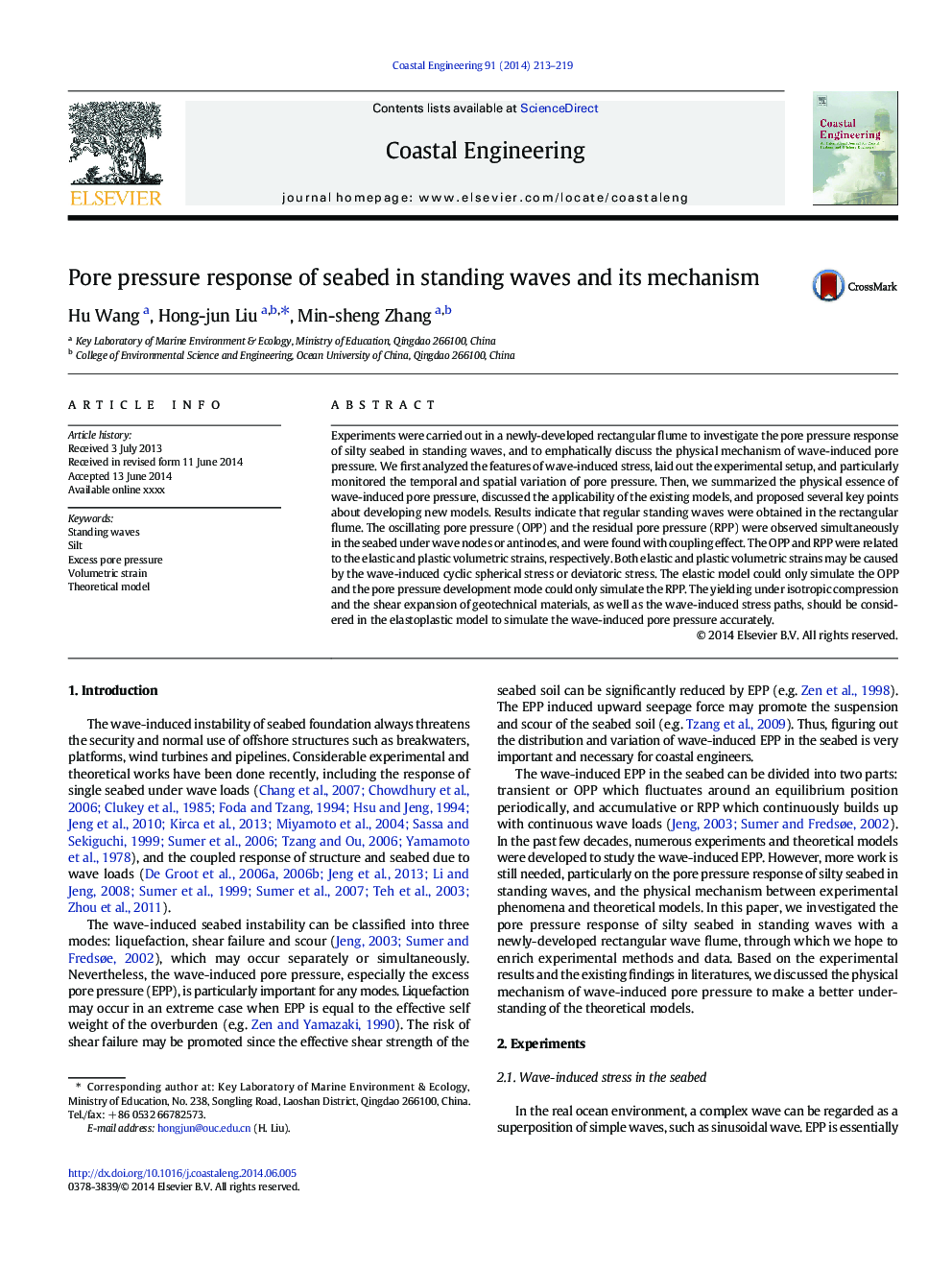| Article ID | Journal | Published Year | Pages | File Type |
|---|---|---|---|---|
| 8059826 | Coastal Engineering | 2014 | 7 Pages |
Abstract
Experiments were carried out in a newly-developed rectangular flume to investigate the pore pressure response of silty seabed in standing waves, and to emphatically discuss the physical mechanism of wave-induced pore pressure. We first analyzed the features of wave-induced stress, laid out the experimental setup, and particularly monitored the temporal and spatial variation of pore pressure. Then, we summarized the physical essence of wave-induced pore pressure, discussed the applicability of the existing models, and proposed several key points about developing new models. Results indicate that regular standing waves were obtained in the rectangular flume. The oscillating pore pressure (OPP) and the residual pore pressure (RPP) were observed simultaneously in the seabed under wave nodes or antinodes, and were found with coupling effect. The OPP and RPP were related to the elastic and plastic volumetric strains, respectively. Both elastic and plastic volumetric strains may be caused by the wave-induced cyclic spherical stress or deviatoric stress. The elastic model could only simulate the OPP and the pore pressure development mode could only simulate the RPP. The yielding under isotropic compression and the shear expansion of geotechnical materials, as well as the wave-induced stress paths, should be considered in the elastoplastic model to simulate the wave-induced pore pressure accurately.
Related Topics
Physical Sciences and Engineering
Engineering
Ocean Engineering
Authors
Hu Wang, Hong-jun Liu, Min-sheng Zhang,
